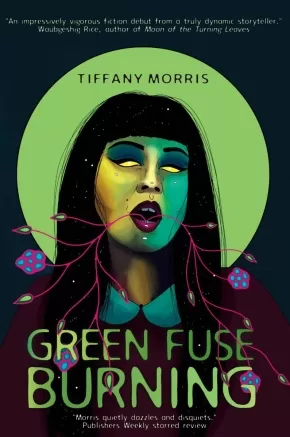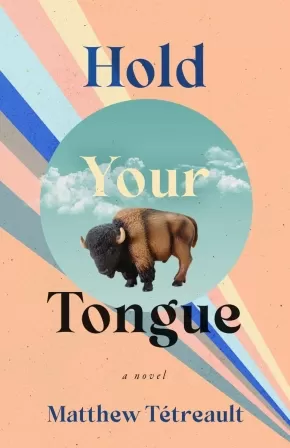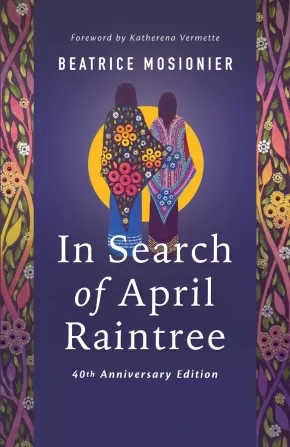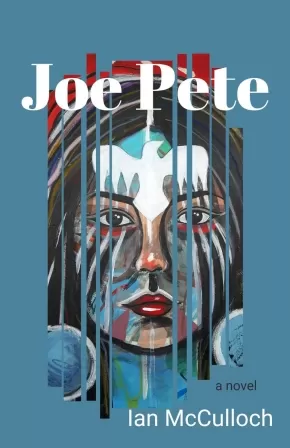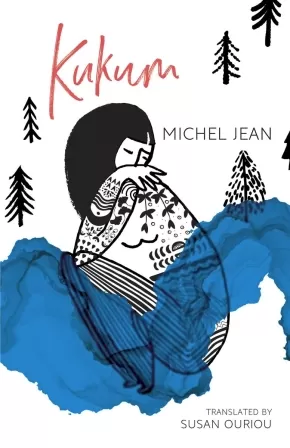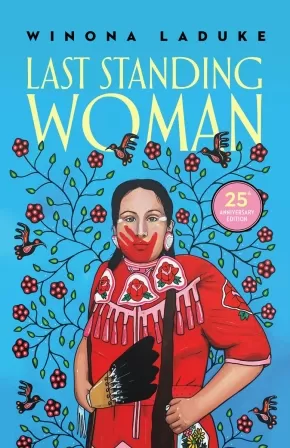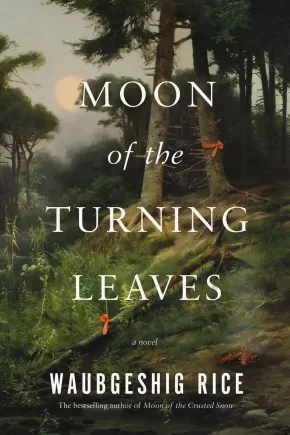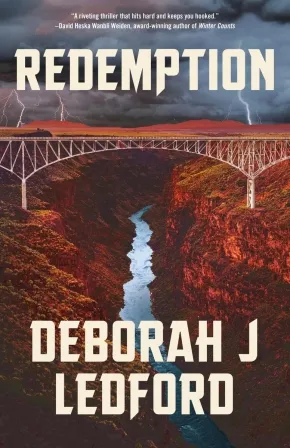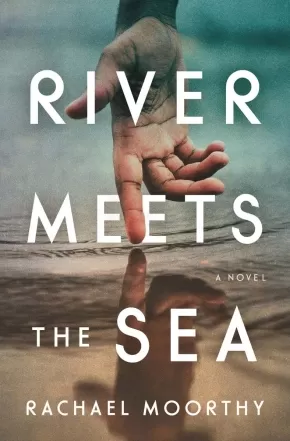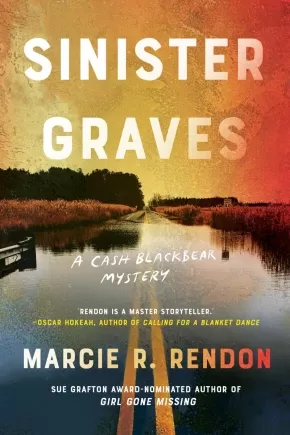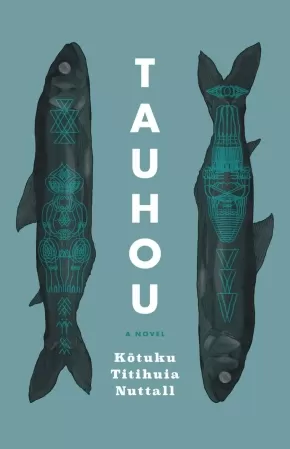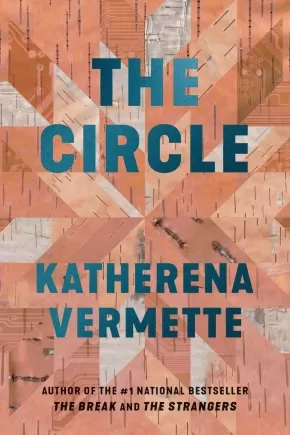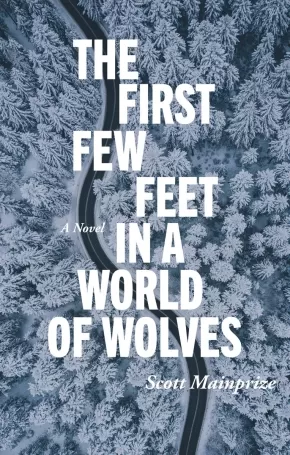
Novels
91
-
105
of
273 Results;
Sort By
Go To
of 19
Green Fuse Burning
$19.99
Format:
Paperback
Text Content Territories:
Indigenous Canadian; First Nations; Mi'kmaq;
Reading Level: N/A
ISBN / Barcode: 9781778092664
Synopsis:
Synopsis:
After the death of her estranged father, artist Rita struggles with grief and regret. There was so much she wanted to ask him – about his childhood, their family, and the Mi'kmaq language and culture from which Rita feels disconnected. But when Rita's girlfriend Molly forges an artist's residency application on her behalf, winning Rita a week to paint at an isolated cabin, Rita is both furious and intrigued. The residency is located where her father grew up.
On the first night at the cabin, Rita wakes to strange sounds. Was that a body being dragged through the woods? When she questions the locals about the cabin's history, they are suspicious and unhelpful. Ignoring her unease, Rita gives in to dark visions that emanate from the forest's lake and the surrounding swamp. She feels its pull, channelling that energy into art like she's never painted before. But the uncanny visions become more insistent, more intrusive, and Rita discovers that in the swamp's decay the end of one life is sometimes the beginning of another.
Reviews
"Green Fuse Burning is an impressively vigorous fiction debut from a truly dynamic storyteller. Tiffany Morris has laid out a concise and creepy tale that mesmerizes as it weaves through several realms, from the tangible to the spiritual. I was captivated by the looming mystery and the striking imagery that carried me like a current to the story's monumental resolution. This book is a must-read in new speculative fiction!" - Waubgeshig Rice, author of Moon of the Turning Leaves
"Morris quietly dazzles and disquiets in this weird horror novella . . . Poetic and grotesque imagery drives the novella's horror, with fluid narration fostering a sense of disconnect and dread . . . This is a subtle and refreshing twist on the cabin in the woods trope." - Publishers Weekly starred review
"A verdant alienation seeps through every page as Morris reimagines the possibilities of decay, a desperate isolation scouring the mind to reveal a torrid, seething strangeness beneath, the inevitable reckoning gathering its strength below the calm surface of the pond." - Andrew F. Sullivan, author of The Marigold and The Handyman Method
Additional Information
112 pages | 6.12" x 9.03" | Paperback
Hold Your Tongue: A Novel
$22.95
Format:
Paperback
Text Content Territories:
Indigenous Canadian; Métis;
Reading Level: N/A
ISBN / Barcode: 9781774390719
Synopsis:
Synopsis:
Upon learning his great-uncle Alfred has suffered a stroke, Richard sets out for Ste. Anne, in southeastern Manitoba, to find his father and tell him the news. Waylaid by memories of his stalled romance, tales of run-ins with local Mennonites, his job working a honey wagon, and struck by visions of Métis history and secrets of his family's past, Richard confronts his desires to leave town, even as he learns to embrace his heritage.
Evoking an oral storytelling epic that weaves together one family's complex history, Hold Your Tongue asks what it means to be Métis and francophone. Recalling the work of Katherena Vermette and Joshua Whitehead, Matthew Tétreault's debut novel shines with a poignant, but playful character-driven meditation on the struggles of holding onto "la langue," and marks the emergence of an important new voice.
Reviews
"Inspired by deep knowledge of his French-Métis homeland, Matthew Tétreault has given us a rich, beautifully written novel. In this story you'll meet unforgettable characters who "sprang from the soil." This intricate yarn is an evocative detective story, a search for the first betrayals and deviations, a glorious patchwork of vision and memory, buoyed by love as tough and vulnerable as the land that nurtured it. The past is palpable, vibrant in these pages, full of promise, like 'seedlings.'"--Margaret Sweatman, author of The Gunsmith's Daughter
"The wonderful thing about Hold Your Tongue is that it definitely does not hold its tongue. English, French, and Michif gallop across its pages, mingling and colliding like the fractious history of the Canadian West echoing into the present. What James Joyce did for the voices of the Irish Matthew Tétreault has done for those of his own people. This earthy, wise, big-hearted novel about a Métis community's tangled past and uncertain future shouts, gossips, mourns, jokes, confesses, and sings. Before you reach the end you'll be singing along with it."--Thomas Wharton, award-winning author of Icefields and The Book of Rain
"Witty, down-to-earth, and yet transformative, Matt Tétreault's Hold Your Tongue sets a new benchmark for literature in Canada, folding in francophone and Métis voice and culture and navigating the tensions of family, history, self, and place. Marked both by verisimilitude and contemplation, Hold Your Tongue is a journey through the geography of identity that emerges speaking with a fresh, assured voice."--Conrad Scott, author of Water Immersion
"With cutting language, Matthew Tétreault weaves a narrative that runs us through history and love of land while simultaneously questioning a modern prairie existence. His distinctive voice brings a reader along with the narrator as he navigates the passing of his great-uncle Alfred and, with that, the loss of generations worth of knowledge. At the same time, the narrator questions a future and what it really means to lose the land you love, the question of leaving, and what coming back home really looks like. From brawls with the neighbouring small towns to being buried in your favourite camo ball cap to figuring out a future that may never really exist, this is a read that will keep you sucked into the pages like a hose pumping out the honey bucket."--Conor Kerr, author of Avenue of Champions
Additional Information
272 pages | 5.50" x 8.50" | Paperback
In Search of April Raintree: 40th Anniversary Edition
$22.95
Format:
Paperback
Text Content Territories:
Indigenous Canadian; Métis;
Reading Level: N/A
ISBN / Barcode: 9781774920916
Synopsis:
Synopsis:
Memories. Some memories are elusive, fleeting, like a butterfly that touches down and is free until it is caught. Others are haunting. You'd rather forget them, but they won't be forgotten. And some are always there. No matter where you are, they are there, too.
In this moving story of legacy and reclamation, two young sisters are taken from their home and family. Powerless in a broken system, April and Cheryl are separated and placed in different foster homes. Despite the distance, they remain close, even as their decisions threaten to divide them emotionally, culturally, and geographically. As one sister embraces her Métis identity, the other tries to leave it behind.
Will the sisters’ bond survive as they struggle to make their way in a society that is often indifferent, hostile, and violent?
Beloved for more than 40 years, In Search of April Raintree is a timeless story that lingers long after the final page. This anniversary edition features a foreword by Governor General’s Award–winning author Katherena Vermette, and an afterword by University of Regina professor, Dr. Raven Sinclair (Ôtiskewâpit), an expert on Indigenous child welfare.
Educator Information
This 40th anniversary edition features a foreword by Governor General’s Award–winning author Katherena Vermette, and an afterword by University of Regina professor, Dr. Raven Sinclair (Ôtiskewâpit), an expert on Indigenous child welfare.
A critical edition of this work, which includes ten critical essays accompanying the text, is available here: In Search of April Raintree: Critical Edition
A version written specifically for students in grades 9-12 that does not contain the graphic scene that is contained in this original version is available here: April Raintree
Find a teacher guide for In Search of April Raintree and April Raintree here: Teacher Guide for In Search of April Raintree and April Raintree: A Trauma-Informed Approach to Teaching Stories of Indigenous Survivance, Family Separation, and the Child Welfare System
Additional Information
343 pages | 5.50" x 8.50" | Paperback | Critical Edition
JAJ: A Haida Manga
$34.95
Artists:
Format:
Hardcover
Text Content Territories:
Indigenous Canadian; First Nations; Haida;
Reading Level: N/A
ISBN / Barcode: 9781771623537
Synopsis:
Synopsis:
With gorgeous imagery, visual artist Michael Nicoll Yahgulanaas brings to life the tumultuous history of first contact between Europeans and Indigenous peoples and the early colonization by the Europeans of the northern West Coast.
Yahgulanaas uses a blend of traditional and modern art, eschewing the traditional boxes of comic books for the flowing shapes of North Pacific iconography. The panels are filled with colourful and expressive watercolour paintings. The panels of each page, if removed and assembled into one whole image, form a large image reminiscent of a woven robe.
The story follows several historical figures, including Johan Adrian Jacobsen (JAJ), who comes to the Haida village of Masset to collect specimens for a German museum, through a time span that includes first contact, the devastation of the smallpox epidemic, and the mass resettlement of disenfranchised peoples, both Indigenous and European.
Reviews
“This book is a necessary tale told by the perfect voice at the right time. It also uses graphic imagery in a way I've not seen before, and it feels ground-breaking.” — Douglas Coupland
Additional Information
132 pages | 8.00" x 10.00" | Hardcover
Joe Pete
$23.95
Format:
Paperback
Text Content Territories:
Indigenous Canadian; First Nations; Cree (Nehiyawak); Moose Cree; Missanabie Cree First Nation;
Reading Level: N/A
ISBN / Barcode: 9781988989723
Synopsis:
Synopsis:
A multi-generational story of loss, war, community, survival, perseverance, and renewal.
Joe Pete and her cousin Simon will find more than they anticipated buried beneath the snow as they search for her missing father. Their journey will unlock the ancestors and spirits embedded in the present who call back to a past marked by war and kinship, by conflict and wisdom that continue to contour their trajectory towards the future.
Additional Information
300 pages | 5.50" x 8.50" | Paperback
Kukum
$22.99
Format:
Paperback
Text Content Territories:
Indigenous Canadian; First Nations; Innu (Montagnais-Naskapi); Mashteuiatsh (Pekuakamiulnuatsh);
Reading Level: N/A
ISBN / Barcode: 9781487010904
Synopsis:
Synopsis:
A Quebec bestseller based on the life of Michel Jean's great-grandmother that delivers an empathetic portrait of drastic change in an Innu community.
Kukum recounts the story of Almanda Siméon, an orphan raised by her aunt and uncle, who falls in love with a young Innu man despite their cultural differences and goes on to share her life with the Pekuakami Innu community. They accept her as one of their own: Almanda learns their language, how to live a nomadic existence, and begins to break down the barriers imposed on Indigenous women. Unfolding over the course of a century, the novel details the end of traditional ways of life for the Innu, as Almanda and her family face the loss of their land and confinement to reserves, and the enduring violence of residential schools.
Kukum intimately expresses the importance of Innu ancestral values and the need for freedom nomadic peoples feel to this day.
Educator Information
Translated by Susan Ouriou.
Additional Information
224 pages | 5.50" x 8.50" | Paperback
Last Standing Woman
$23.95
Format:
Paperback
Text Content Territories:
Indigenous American; Native American; Anishinaabeg; Ojibwe (Chippewa); Minnesota Chippewa Tribe; White Earth Band of Ojibwe;
Reading Level: N/A
ISBN / Barcode: 9781774920527
Synopsis:
Synopsis:
Hopeful, irreverent, and deeply moving, Winona LaDuke’s Last Standing Woman chronicles the stories and struggles of an Anishinaabe community across seven generations.
Born at the turn of the 21st century, The Storyteller, also known as Ishkwegaabawiikwe (Last Standing Woman), carries her people’s past within her memories. The White Earth Anishinaabe people have lived on the same land since time immemorial. Among the towering white pines and rolling hills, each generation is born, lives out their lives, and is buried.
The arrival of European missionaries changes the community forever. Piece by piece, government policies rob the people of their land. Missionaries and Indian agents work to outlaw ceremonies the Anishinaabeg have practised for centuries. Grave-robbing anthropologists dig up ancestors and whisk them away to museums as artifacts. Logging operations destroy traditional sources of food, pushing the White Earth people to the brink of starvation.
Battling addiction, violence, and corruption, each member of White Earth must find their own path of resistance as they struggle to reclaim stewardship of their land, bring their ancestors home, and stay connected to their culture and to each other.
In this highly anticipated 25th anniversary edition of her debut novel, Winona LaDuke weaves a nonlinear narrative of struggle and triumph, resistance and resilience, spanning seven generations from the 1800s to the early 2000s.
Reviews
"Humor and compassion are ever present, and at its best, Last Standing Woman is a dignified and powerful retelling of one reservation's struggle for survival."— Booklist, quote from review of previous edition
"Rooted in LaDuke's own Anishinaabe heritage, the novel skillfully intertwines social history, oral myth and character study in ways reminiscent of Leslie Marmon Silko and Louise Erdrich." — Publishers Weekly, quote from review of previous edition
"LaDuke's characters are as vital and fully realized as any in a Louise Erdrich novel...Recommended for both public and academic libraries." — Library Journal, quote from review of previous edition
"The Anishinaabe culture leaps off the page and you can practically smell the fry bread cooking on the stove and hear the drums beating in the distance."— Book Snob, quote from review of previous edition
Additional Information
360 pages | 5.50" x 8.50" | Paperback | 25th Anniversary Edition
Moon of the Turning Leaves
$24.95
Format:
Paperback
Text Content Territories:
Indigenous Canadian; First Nations; Anishinaabeg;
Grade Levels: 12; University/College;
ISBN / Barcode: 9780735281585
Synopsis:
Synopsis:
Twelve years after the lights go out . . .
An epic journey to a forgotten homeland
The hotly anticipated sequel to the bestselling novel Moon of the Crusted Snow
It's been over a decade since a mysterious cataclysm caused a permanent blackout that toppled infrastructure and thrust the world into anarchy. Evan Whitesky led his community in remote northern Ontario off the rez and into the bush, where they've been living off the land, rekindling their Anishinaabe traditions in total isolation from the outside world. As new generations are born, and others come of age in the world after everything, Evan’s people are in some ways stronger than ever. But resources in and around their new settlement are beginning to dry up, and the elders warn that they cannot afford to stay indefinitely.
Evan and his fifteen-year-old daughter, Nangohns, are elected to lead a small scouting party on a months-long trip to their traditional home on the north shore of Lake Huron—to seek new beginnings, and discover what kind of life—and what dangers—still exist in the lands to the south.
Moon of the Turning Leaves is Waubgeshig Rice’s exhilarating return to the world first explored in the phenomenal breakout bestseller Moon of the Crusted Snow: a brooding story of survival, resilience, Indigenous identity, and rebirth.
Reviews
"An epic journey into the future, powerfully haunting." —Silvia Moreno-Garcia, bestselling author of Mexican Gothic
“Tense, atmospheric, and ultimately hopeful, Rice masterfully delivers an unsettling, page-turning sequel." —Eden Robinson, author of Son of a Trickster
“It felt like an eternity waiting for Waubgeshig to write the sequel to Moon of the Crusted Snow and it was worth it. As we as a species ponder our own survival, this talented author walks his courageous characters through an odyssey towards hope. At times heart-racing and at times heart wrenching, Moon of the Turning Leaves allows us all to turn the page and find out what’s next in an uncertain future.” —Catherine Hernandez, award-winning author and screenwriter of Scarborough the novel and film
“[Moon of the Turning Leaves] is by turns beautiful and inspiring and bleak and violent. In other words, the perfect dystopian read. Let's hope Waubgeshig Rice doesn't make us wait too long for the next visit to this captivating world.” —Alma Katsu, author of The Fervor and The Hunger
"Novels, when brilliantly written, are passports to another place, another world. Moon of the Turning Leaves takes us to a First Nations community beset by an unbelievable fate that’s managed to survive when much of the world hasn't. Rice has given us a meaningful journey, and people to cheer for. I was in this story." —Drew Hayden Taylor, author of Motorcycles and Sweetgrass and Cold
“Waubgeshig Rice's stories are good medicine. Moon of the Turning Leaves is a restorative balm for my spirit.” —Angeline Boulley, New York Times bestselling author of Firekeeper's Daughter and Warrior Girl Unearthed
"Rice quite brilliantly weaves this sequel to Moon of the Crusted Snow such that the ongoing journey of those wonderfully drawn characters carries on seamlessly. Moon of the Turning Leaves stands on its own while simultaneously carrying the heart of the original story. Suspenseful and gripping, the great anticipation for this next installment is borne out by this artful storytelling." —Michelle Good, award-winning author of Five Little Indians and Truth Telling
Additional Information
312 pages | 5.50" x 8.25" | Paperback
Redemption
$23.99
Format:
Paperback
Text Content Territories:
Indigenous American; Native American; Taos Pueblo;
Reading Level: N/A
ISBN / Barcode: 9781662510472
Synopsis:
Synopsis:
From award-winning author Deborah J Ledford comes a thrilling new series featuring a Native American sheriff’s deputy who risks it all to find a friend who’s gone missing.
After four women disappear from the Taos Pueblo reservation, Deputy Eva “Lightning Dance” Duran dives into the case. For her, it’s personal. Among the missing is her best friend, Paloma, a heroin addict who left behind an eighteen-year-old son.
Eva senses a lack of interest from the department as she embarks on the investigation. But their reluctance only fuels her fire. Eva teams up with tribal police officer and longtime friend Cruz “Wolf Song” Romero to tackle a mystery that could both ruin her reputation and threaten her standing in the tribe.
And when the missing women start turning up dead, Eva uncovers clues that take her deeper into the reservation’s protected secrets. As Eva races to find Paloma before it’s too late, she will face several tests of loyalty—to her friend, her culture, and her tribe.
Reviews
“Deborah J. Ledford has artfully woven the voices of multiple characters connected to the Taos Pueblo to create a pattern of stories that illuminate the challenges as well as the enduring power of Native American women. The rhythm of daily life is evident in Ledford’s lovely, intimate prose. I eagerly await the new adventures of Eva Duran, who will, no doubt, unearth more mysteries in the buried layers of New Mexico.” —Naomi Hirahara, the Mary Higgins Clark Award–winning author of Clark and Division
“Redemption is a page-turner! I loved reading about sheriff’s deputy Eva Duran and her battle against dark forces on the reservation. Sharp characters, a great setting, and a plot that keeps you guessing. A riveting thriller that hits hard and keeps you hooked.” —David Heska Wanbli Weiden, Anthony and Thriller Award–winning author of Winter Counts
“A riveting tale of murder and intrigue on a Native American reservation from an immensely talented voice in crime fiction. Deborah J. Ledford has created a page-turner featuring an unforgettable hero in Eva ‘Lightning Dance’ Duran.” —Isabella Maldonado, Wall Street Journal bestselling author
Series Information
This book is part of the Eva "Lightning Dance" Duran series.
Additional Information
366 pages | 5.50" x 8.50" | Paperback
River Meets the Sea: A Novel
$24.99
Format:
Paperback
Text Content Territories:
Indigenous Canadian;
Grade Levels: 12; University/College;
ISBN / Barcode: 9781487011420
Synopsis:
Synopsis:
A spellbinding, spirited tale of two men exploring masculinity, race, and belonging in a desperate search to feel at home in their own skins.
An enthralling nautical epic, River Meets the Sea traces the dual timelines of a white-passing Indigenous foster child in 1940s Vancouver and a teenage immigrant in the suburbs of Nanaimo in the 1970s.
A natural-born storyteller, Ronny is a left-handed "alley mutt" without a birth certificate who searches for his mother everywhere - most powerfully, he hears her voice in the surging Stó:lo River. Born in the middle of the ocean on a merchant ship departing Sri Lanka, Chandra is a Tamil boy with "skin like a charred eggplant" who finds his haven from the pressure to assimilate by swimming and surfing in the Salish Sea.
Moving gracefully between these parallel stories like a wave, the novel traces the seemingly separate lives of these sensitive young men and their everlasting connections to water. When their troubled paths inevitably cross, they form a sacred bond based on the mutual understanding of what it means to be othered, illuminating the interconnectedness of humanity and our innate relationship with the natural world.
Reviews
"Brilliant and inventive, River Meets the Sea is elegantly told in heartrending poetry. Moorthy's protagonists, Chandra and Ronny, feel familiar in their search for meaning and belonging, even as they grapple with the implications of race and masculinity. With exquisite prose in which water becomes just as much a character as Chandra and Ronny, River Meets the Sea flows smoothly between the protagonists' histories, the forces that propel them, and their inevitable meeting." — Francesca Ekwuyasi, author of Butter Honey Pig Bread
"Rachael Moorthy's writing is driven by an innate creative curiosity, interrogating history, identity, and the human condition, and always rooted in deep artistic and moral convictions."— Lee Henderson, author of The Road Narrows as You Go
"Rachael Moorthy's writing is driven by an innate creative curiosity, interrogating history, identity, and the human condition, and always rooted in deep artistic and moral convictions."— Lee Henderson, author of The Road Narrows as You Go
"Deeply poetic, fluid, and dreamlike, Rachael Moorthy's prose, much like her characters, is more than just the sum of its parts. She transports readers to a time and place thoroughly lived in with characters that carry powerful memories and stories. An excellent debut!" — Ajuawak Kapashesit, star of Indian Horse
Additional Information
400 pages | 5.25" x 8.00" | Paperback
Rocker from the Rez
$34.10
Format:
Paperback
Text Content Territories:
Indigenous Canadian;
Reading Level: N/A
ISBN / Barcode: 9780228628316
Synopsis:
Synopsis:
There are worse places to live than the rez. Still, family distractions make it almost impossible for Ray Smith and his three bandmates to rehearse every day. So, fresh from high school, the four move to Wakeville, Manitoba to pursue their passion for music.
A half-year later, gigs come fast and thick, with the group touring the northern province. However, too much partying and fighting leads to a bitter split between the band and their volatile bass player, Butch. Bad luck and sabotage from Butch causes gigs to dwindle, and with encouragement from his best friend and guitarist, Ray decides to join a new, well-known band, where his music career takes off. Soon he’s recognized on the street, has spots on TV, and back home he’s hailed a hero.
But success has a dark underbelly. A girl goes missing, and Ray’s loved ones are terrorized by a faceless, vengeful stalker. The question isn’t the culprit’s identity—Ray’s almost positive he knows who’s responsible. But stopping the killer before someone else is murdered…that’s a whole other story.
Additional Information
234 pages | 5.25" x 8.00"
Sinister Graves (PB)
$22.95
Format:
Paperback
Text Content Territories:
Indigenous American; Native American; Anishinaabeg; Ojibwe (Chippewa);
Reading Level: N/A
ISBN / Barcode: 9781641295239
Synopsis:
Synopsis:
Set in 1970s Minnesota on the White Earth Reservation, Pinckley Prize–winner Marcie R. Rendon’s gripping new mystery follows Cash Blackbear, a young Ojibwe woman, as she attempts to discover the truth about the disappearances of Native girls and their newborns.
A snowmelt has sent floodwaters down to the fields of the Red River Valley, dragging the body of an unidentified Native woman into the town of Ada. The only evidence the medical examiner recovers is a torn piece of paper inside her bra: a hymn written in English and Ojibwe.
Cash Blackbear, a 19-year-old, tough-as-nails Ojibwe woman, sometimes uses her special abilities to help Sheriff Wheaton, her guardian, with his investigations. When Cash sees the hymn, she knows her search for justice for this anonymous victim will lead her somewhere she hasn’t been in over a decade: the White Earth Reservation, a place she once called home.
When Cash happens upon two small graves in the yard of a rural, “speak-in-tongues kinda church,” she is pulled into the lives of the pastor and his wife while yet another Native woman turns up dead and her newborn is nowhere to be found.
Reviews
“Marcie Rendon is writing an addictive and authentically Native crime series propelled by the irresistible Cash Blackbear—a warm, sad, sharp, funny and intuitive young Ojibwe woman. I want a shelf of Cash Blackbear novels! To my delight I have a feeling that Rendon is only getting started.”—Louise Erdrich, author of the Pulitzer Prize-winning novel The Night Watchman
Series Information
This is the third book in the Cash Blackbear Mystery series from author Marcie Rendon.
Additional Information
240 pages | 5.50" x 8.23" | Paperback
Tauhou: A Novel
$24.99
Text Content Territories:
Indigenous Canadian; First Nations; Salish; Coast Salish; Saanich (WSANEC); Indigenous New Zealander; Maori; Ngati Tuwharetoa; Te Ati Awa;
Reading Level: N/A
ISBN / Barcode: 9781487011697
Synopsis:
Synopsis:
Dear grandmother, I am writing this song, over and over again, for you. I am a stranger in this place, he tauhou ahau, reintroducing myself to your land.
Tauhou is an inventive exploration of Indigenous families, womanhood, and alternate post-colonial realities by Kotuku Titihuia Nuttall, a writer of Maori and Coast Salish descent. This innovative hybrid novel envisions a shared past between two Indigenous cultures, set on reimagined versions of Vancouver Island and Aotearoa New Zealand that sit side by side in the ocean.
Each chapter is a fable, an autobiographical memory, a poem. A monster guards cultural objects in a museum, a woman uncovers her own grave, another woman remembers her estranged father. On rainforest beaches and grassy dunes, sisters and cousins contend with the ghosts of the past - all the way back to when the first foreign ships arrived on their shores.
In a testament to the resilience of Indigenous women, the two sides of this family, Coast Salish and Maori, must work together in understanding and forgiveness to heal that which has been forced upon them by colonialism. Tauhou is an ardent search for answers, for ways to live with truth. It is a longing for home, to return to the land and sea.
Reviews
"Tauhou is a search for answers, of finding ways to live with the truth. Some of the stories are like fables, others like poetry, and all are a sheer joy to read. A longing for home resonates, a gift for those of us searching for our island also."— Kete Books
"This one's for the lovers of language, lean prose-poetry you can dip in and out of and think about for hours. Best read beside a large body of water."— Woman Magazine
"Brilliantly written in the best of Maori and Coast Salish practices of story, Tauhou is teeming with possibility, love, and dreaming otherwise." — Leanne Betasamosake Simpson, author of Noopiming: The Cure for White Ladies
"Kotuku Titihuia Nuttall takes threads made from all the colours of the Indigenous experience and crosses them over oceans, cultures, and time." — Tayi Tibble, author of Poukahangatus and Rangikura
"Kotuku Titihuia Nuttall's Tauhou is a brilliant example of what language can do when forged with intentional hands and a fantastic mind. Nuttall's work binds words in a way that doesn't hold too tightly but steadfastly contains the many Ancestors present in Nuttall's life and work, weaving together a tapestry of nuance and witnessing. Masterful dialogue and rich scenes move emotions like the currents around Aotearoa and the Salish Seas, a beautiful display of lyricism that loudly proclaims that Kotuku Titihuia Nuttall belongs in the crescendo of rising voices in CanLit. Tauhou is not a collection to miss!" — jaye simpson, author of it was never going to be okay
"The stories in this collection move like the waves of the ocean that divide Vancouver Island and Aotearoa. Once you emerge from Tauhou's narrative depths, you'll miss its imagination, its rhythms, its heart." — Alicia Elliott, author of A Mind Spread Out on the Ground
Educator Information
Includes a SENĆOŦEN glossary, a Te Reo Māori glossary, an Author's Notes and Acknowledgements.
Curriculum Connections: Indigenous Studies
Additional Information
224 pages | 5.00" x 7.75" | Hardcover
The Circle (HC) (2 in Stock)
$32.00
Format:
Hardcover
Text Content Territories:
Indigenous Canadian; Métis;
ISBN / Barcode: 9780735239654
Synopsis:
Synopsis:
“The Circle is a polyphonic masterpiece.” —Erika T. Wurth, author of White Horse
From the award-winning and #1 bestselling author of The Break and The Strangers comes a poignant and unwavering epic told from a constellation of Métis voices that consider the fallout when the person who connects them all goes missing
The concept was simple. You sit a bunch of people in a circle—everyone who hurt, everyone who got hurt, all affected—and let them share. Some people, it helped them heal, for sure. Others went in angry and left a different kind of angry. Learned how the blame belonged on the system, the history, the colonizer, the big things that were harder to change than one bad person.
The day that Cedar Sage Stranger has been both dreading and longing for has finally come: her sister Phoenix is getting out of prison.
The effect of Phoenix’s release cascades through the community. M, the young girl whom she assaulted, is triggered by the news. Her mother, Paulina, is worried and her cousin is angry—all feel the threat of Phoenix’s release. When Phoenix is seen lingering outside the school to catch a glimpse of her son, Sparrow, the police get a call to file a report—but the next thing they know, she has disappeared.
Amid accusations and plots for revenge, past grievances become a poor guide in a moment of danger, and the clumsy armature of law enforcement is no match for the community. Cedar and her and Phoenix’s mother, Elsie, continue down different paths of healing, while everyone in their lives form a circle around the chaos, the calm within the storm, and the beauty in the darkness.
Fierce, heartbreaking, and profound, Vermette’s The Circle is the third and final companion novel to her bestsellers The Break and The Strangers. Told from various perspectives, with an unforgettable voice for each chapter, the novel is masterfully structured as a Restorative Justice Circle where all gather—both the victimized and the accused—to take account of a crime that has altered the course of their lives. It considers what it means to be abandoned by the very systems that claim to offer support, how it feels to gain a sense of belonging, and the unanticipated cost of protecting those you love most.
Reviews
“Like Orange's There There, The Circle is a polyphonic masterpiece. Brutal at turns, and tender at others, it's about the tremendous impact one person can have on an entire community.” —Erika T. Wurth, author of White Horse
“Like its sisters in this trilogy, every page of The Circle is a steady and rhythmic observation of our humanity as Indigenous people. It asks what restitution and justice could possibly feel like when we, as Indigenous people, are all subjects of this unjust empire called Canada. This book is truth in all her fluid forms. It is an altar of love, hope, and grief amidst the relentless torment of settler colonialism. Katherena Vermette, in her distinctly elegant style, offers a glimpse into the devastating beauty of our people and our capacity to keep moving forward, one foot at a time, guided by the love and strength of our ancestors. It reminds us that, in the end, all that’s left is the stories we carry with the people we loved.”—Elle-Máijá Tailfeathers, filmmaker and actor
“A perfect companion to The Break and The Strangers, Katherena Vermette’s The Circle draws us back into the lives of characters who we’ve come to know so intimately that their heartache is our heartache. With each new perspective as distinct and vivid as the last, The Circle acts as an unsettling reminder that the systems designed to help the most vulnerable too often end up betraying them. This is a stellar finale with an ending that will leave you both heartbroken and hopeful.”—Amanda Peters, author of The Berry Pickers
Additional Information
272 pages | 6.00" x 9.00" | Hardcover
The First Few Feet in a World of Wolves
$24.95
Format:
Paperback
Text Content Territories:
Indigenous Canadian; First Nations; Anishinaabeg; Algonquin; Inuit;
Reading Level: N/A
ISBN / Barcode: 9781998779093
Synopsis:
Synopsis:
The First Few Feet in a World of Wolves chronicles the fictionalization of the year the author spent teaching in Aupaluk (a remote Inuit community on the Ungava Coast of Nunavik). The story outlines, and explores, the history of oppression experienced by the more than five hundred Indigenous nations across northern Turtle Island at the hands of the Canadian government since the Royal Proclamation.
Told through the voice of Nomad, who finds himself very much at odds with the land itself. Nomad slowly learns how to reconnect with his fractured history as he embraces and is embraced by the Elders and his own students. Told is crisp, spare prose, this debut novel brings forward a powerful new Indigenous voice to the literary landscape.
Reviews
"Speaking in a voice that is both powerful and playful, Scott Mainprize weaves a thoughtful investigation into the Indigenous Peoples' oppression through the eyes of his fictional character, Nomad. And we discover as Nomad discovers that the art of storytelling is a way towards healing and reconciliation." - Mary Barnes, author of Moving Upstream
Additional Information
350 pages | 8.00" x 5.00"| Paperback
Sort By
Go To
of 19

